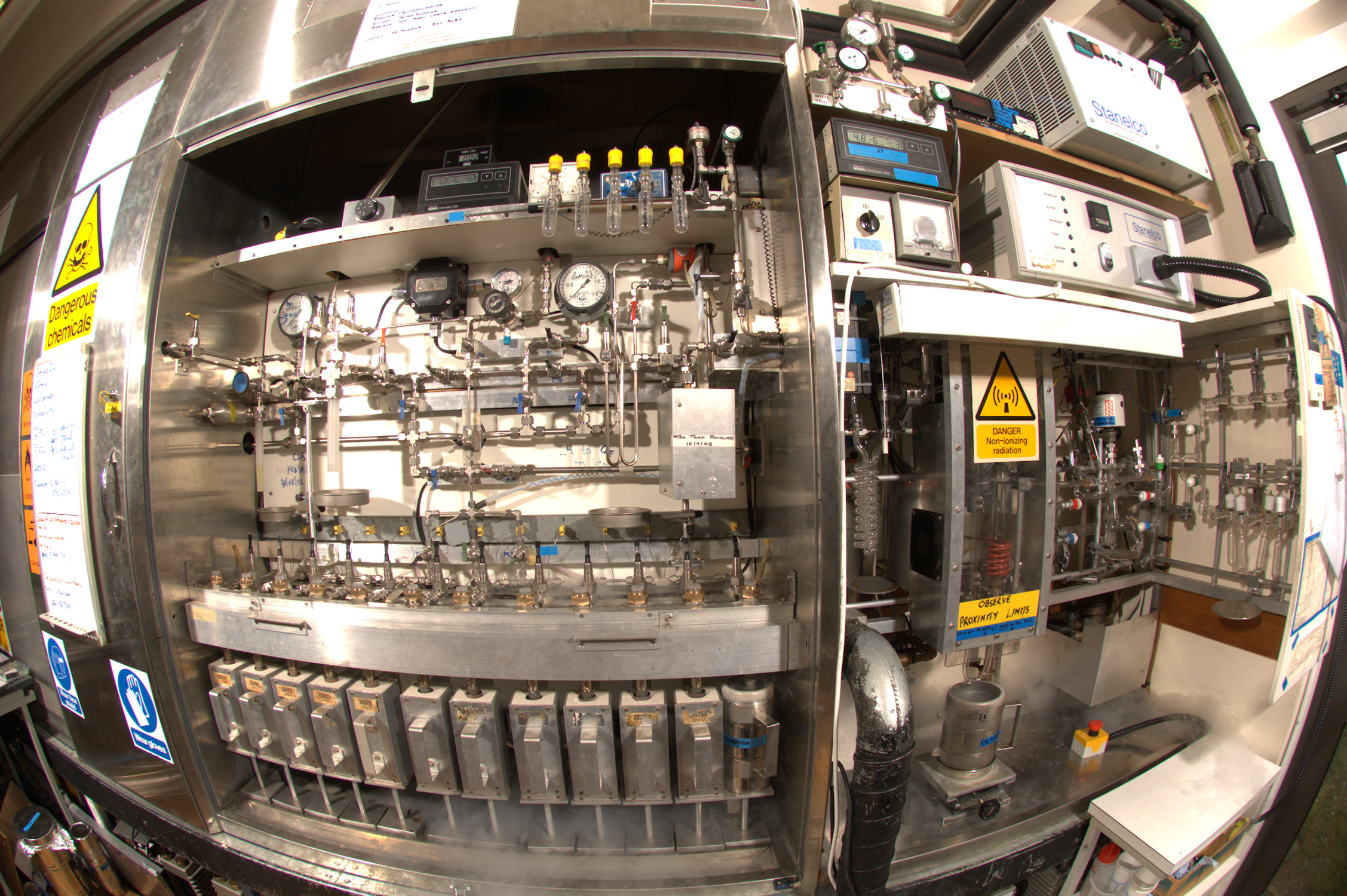NEIF capabilities for geochronology can determine ages, rates and sources for Earth system processes on timescales from the present (e.g. global carbon cycling), to the beginning of planetary formation (e.g. solar system origins). This is achieved through a suite of techniques comprising: radiocarbon (14C), argon dating (e.g., K-Ar, 40Ar/39Ar), uranium-daughter geochronology (e.g., U-Pb, Th-Pb, U-Th), other long-lived radiogenic systems (e.g. Rb-Sr, Sm-Nd and Lu-Hf), cosmogenic radionuclides (e.g. 10Be, 26Al, 36Cl, 3He, 21Ne) and moderate to heavy metal isotope tracers (e.g. Cu, Sr, Pb, Hf, U, Zn, Nd). All methods are delivered with the latest techniques and instrumentation, including both high-precision and high-spatial resolution methods.
High spatial resolution geochronology using secondary ion mass spectrometry is available through the NERC Ion Microprobe Facility (IMF), which is affiliated with NEIF. Capabilities include U-Pb dating of zircon, monazite, rutile and other accessory minerals, and K-Ca dating of alkali feldspars, micas, and potentially other high-K minerals. Applications for access to the IMF are made separately through its Steering Committee.
NB: Low-temperature thermochronology is not currently part of the NEIF portfolio (although separately available at SUERC). Although highlighted as desirable by the UK research community, this is dependent on demonstration of consistent community demand, and funding constraints. Opportunities are discussed further below.

Environmental and Earth tracer capability including all the common light stable isotope tracers (e.g. O, H, C, N, S, Si in all matrices), supporting biogeochemistry, archaeology, palaeoclimatology and climate change, human-landscape interactions, ecology, pollution, the hydrological cycle, applied minerals and energy research.
Organic compound analysis via GC/MS, Py-GC/MS, LC/MS, GC-C-IRMS, GC-TC-IRMS and LC-IRMS, with the isotope work mainly being at natural abundances but with well-developed capabilities for stable isotope labelled tracer work (13C, 15N, D), supporting a variety of biological and environmental investigations in biogeochemistry, archaeology, palaeoclimatology and climate change, human-landscape interactions, ecology, pollution, and the hydrological cycle.
Areas of additional capability identified by NERC that can be delivered by NEIF. These include: low temperature thermochronology ((U-Th)/He) and other non-traditional stable isotopes (e.g. Li, Mg, Ca, Fe, Os).